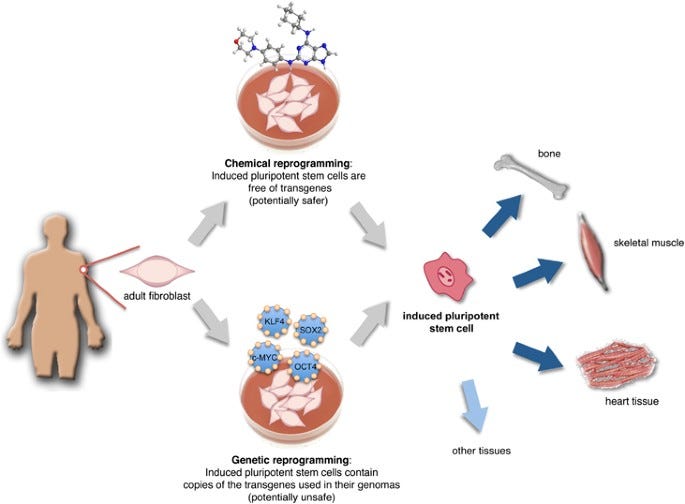Cellular Reprogramming
Written by Ayebamiebi Yousuo
In human development there are what we call stem cells that give rise to various cell types, serving as precursors. We can liken this to flour being used in the production of bread, cake and meat-pie with flour representing the stem cells and the flour products representing various cell types.
Now, imagine producing cake from bread, or meat-pie from cake, that's what cellular reprogramming looks like.
In this article we will look at the how and why of cellular reprogramming.
How are cells reprogrammed?
Cellular reprogramming can be broken down into 3 simple steps:
Reversion to Embryonic Stem Cell: after the somatic cell(say skin cell) has been isolated they are exposed to transcription factors called Yamanaka Factors, named after the Noble-prize winner Shinya Yamanaka. These factors targeted specific regions of the cell’s DNA activating genes that are normally only activated in embryonic stem cells therefore reverting these cells to the embryonic stem cell-like state
Selection and Expansion of Colonies: it is not all the reverted cells that have the desired morphology of Pluripotent Stem Cell(PSC) needed for the final process of cellular reprogramming, therefore the need for the selection of Colonies by running various tests including tests for stability and the capability to give rise to the three germ layers(Endoderm, Mesoderm and Ectoderm). The most suitable colonies are signaled to further divide and result in colony expansion.
Signaling to Maturity: this is where cells are signalled to give rise to the desired matured cell(say neuron) to mimic cell development and differentiation during embryonic development. The stem cells are signalled by various transcription factors (Growth Factors, Maturation Factors, etc.) that turn on genes responsible for development and differentiation into a particular cell type.
Why Cellular Reprogramming?
The problem of ethical issues with harvesting embryonic stem cells from embryos no longer poses a threat to researching and understanding the prospects of stem cells in medicine.
Disease conditions can be modeled down to the cellular level making it easier for scientists to study the disease, and a better understanding of various disease conditions will mean better choice of therapy and even personalized therapy for patients.
It also creates more opportunities in the world of regenerative medicine as damaged cells of tissues and organs can be replaced.
Indeed, the future of medicine is here with technologies like these diseases that were taught to be incurable would be cured. What would this mean for the world of medicine?
Reference
https://iscrm.uw.edu/what-is-cell reprogramming/#:~:text=What%20is%20Cell%20Reprogrammi ng%3F,of%20cell%20in%20the%20body.
Written by Ayebamiebi Yousuo from MEDILOQUY


